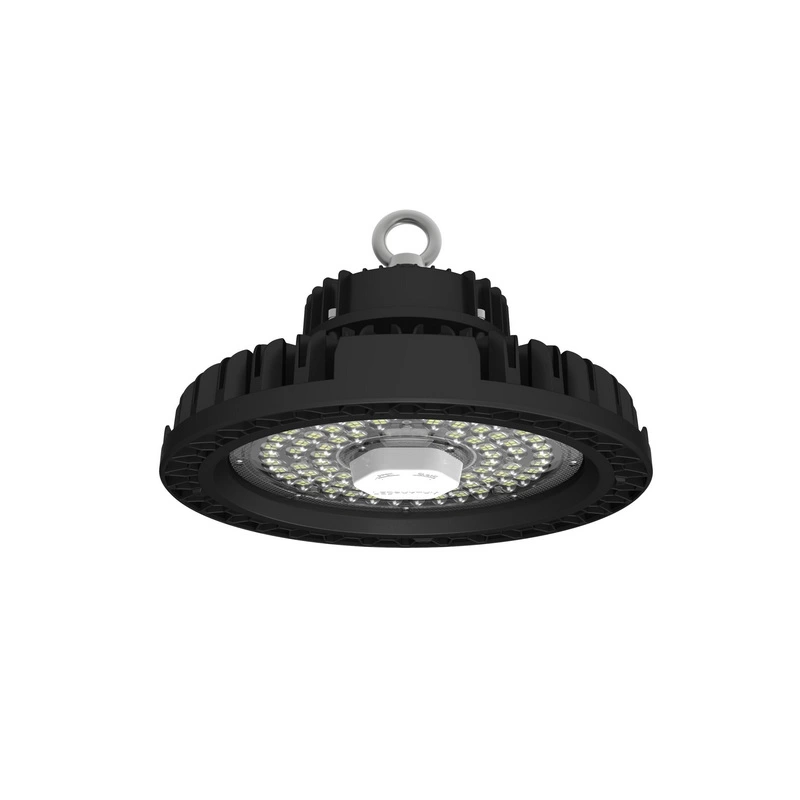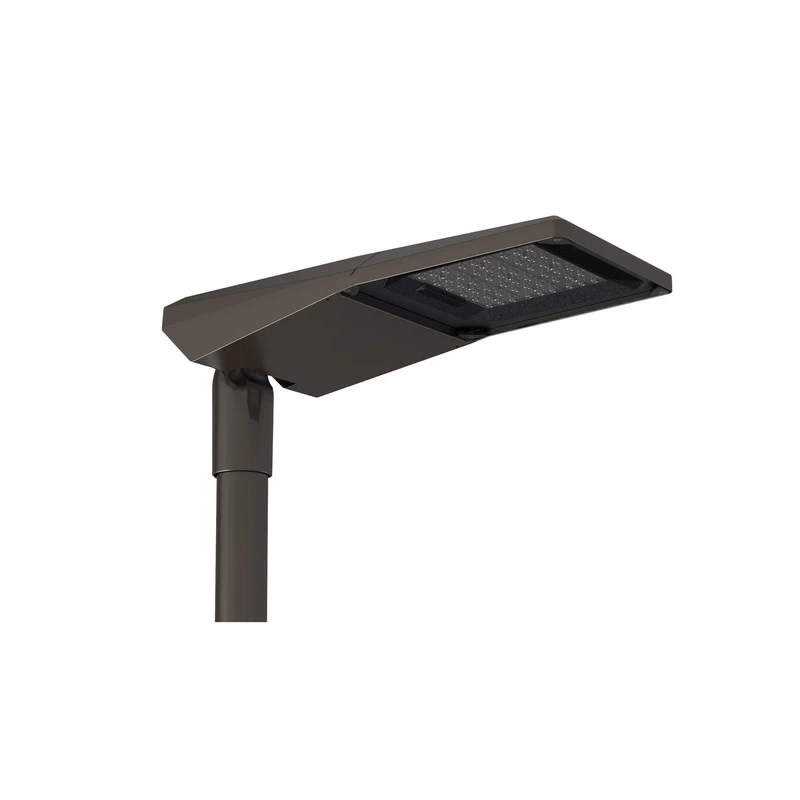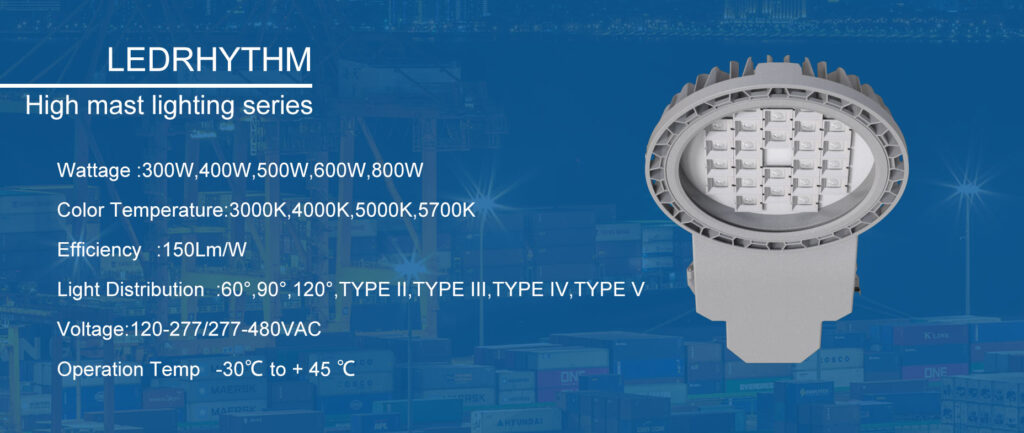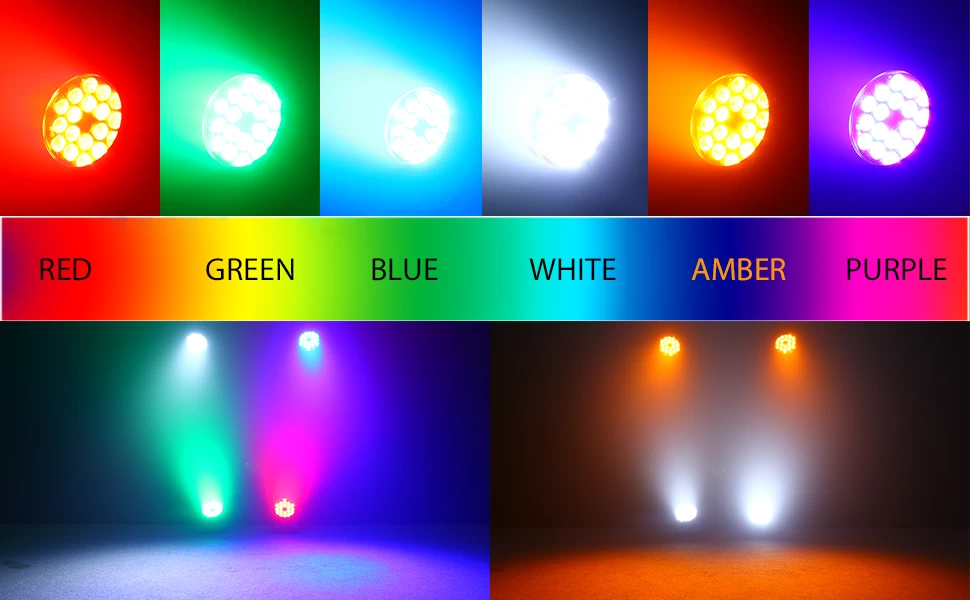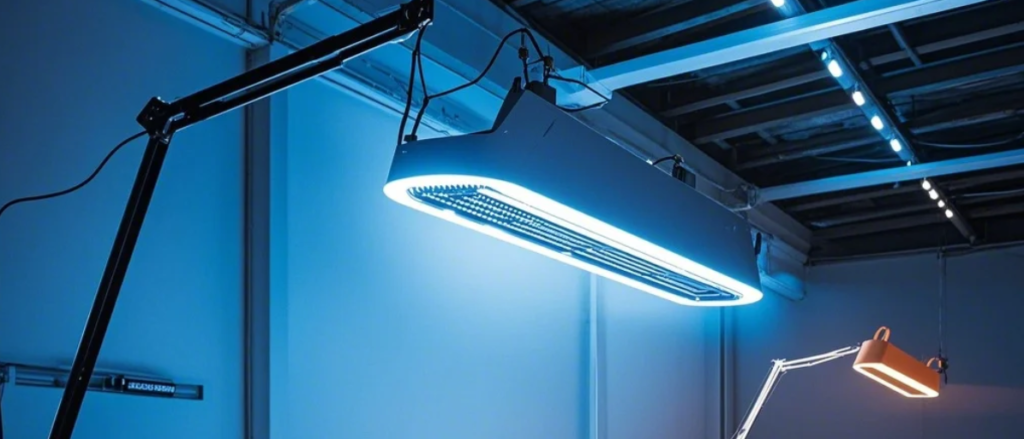目录
切换导言
您是否想过,那些壮观的灯光秀和完美同步的灯光效果是如何实现的?答案就是 DMX(数字多路复用信号)灯光控制。但 DMX 究竟是什么?
- DMX 是一种标准化协议,它彻底改变了我们控制灯光的方式。
- 常用于舞台灯光、建筑灯光秀和表演灯光联动等。
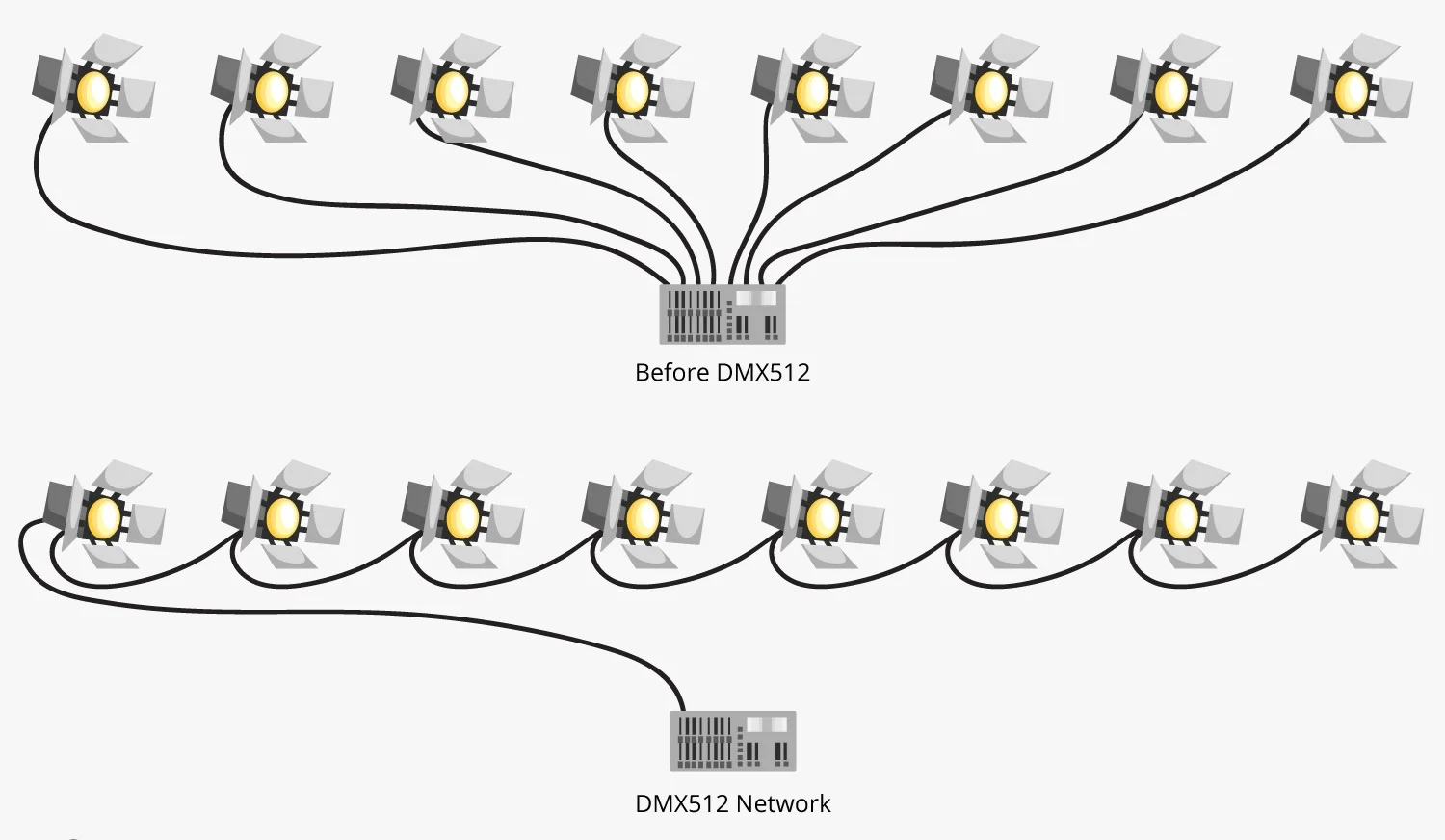
DMX 的定义
DMX 是 DMX512 的缩写,DMX512(数字多路复用 512)是一种数字通信协议,用于舞台灯光、建筑照明和特效控制。它使舞台灯光控制台和灯具之间的通信标准化,从而实现了精确而富有创意的灯光设计。
- DMX 就像一个主遥控器,能够同时指挥多个 "通道"(设备)。
- "512 "表示一个 DMX 信号能够同时控制 512 个通道。
什么是 DMX 照明?
DMX 的核心是一种数字通信系统,可以控制多种照明参数。那么,这对你意味着什么呢?这意味着您可以轻松定制和协调灯光的颜色、强度和模式。
DMX 通道是该系统的关键要素。每个通道代表灯光的特定属性,如颜色(RGB 灯光的红、绿、蓝)、调光级别或频闪效果。通过操作这些通道,您可以创建大量的灯光场景。
例如,使用 RGB 泛光灯,分配给红、绿、蓝通道的不同数值组合可以产生无数种颜色。不仅限于颜色,DMX 还能控制变化的速度和顺序,为您提供动态和引人入胜的灯光展示。
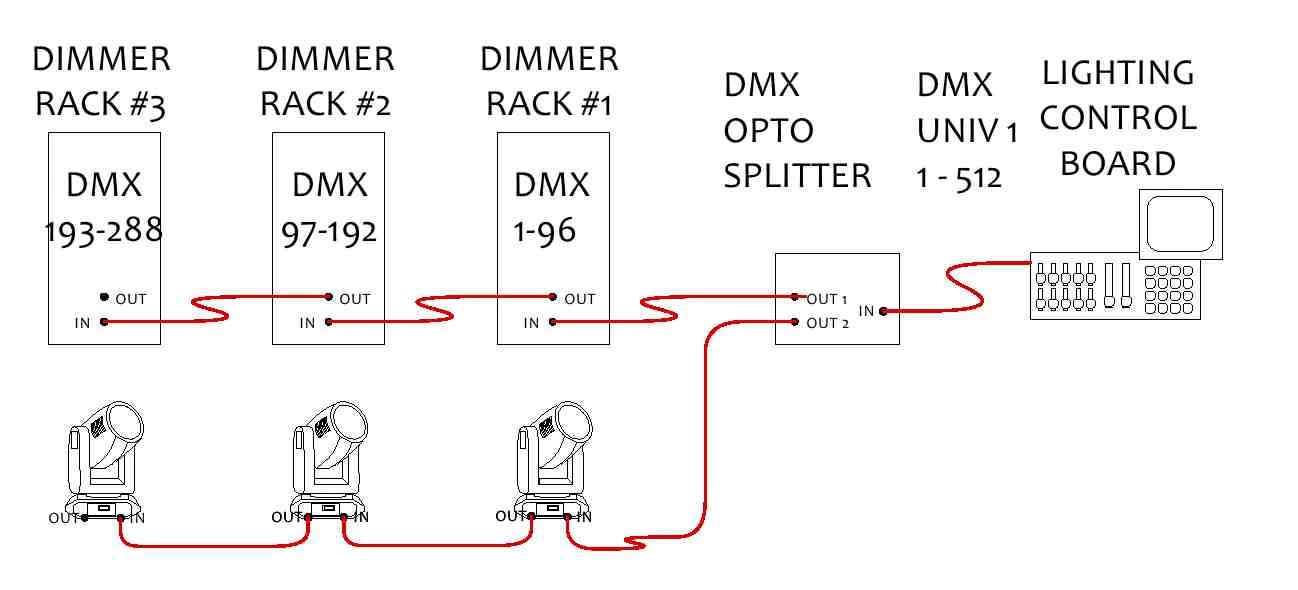
DMX 控制参数
要实现 DMX 控制,需要几个基本组件。首先是 DMX 控制器。它是操作的大脑,负责发送数字信号,告诉灯光该做什么。
DMX 控制的灯具,无论是 LED 还是传统灯具,都是为接收和响应这些信号而设计的。这些灯具有内置电路,可以解释 DMX 数据并相应地调整其性能。
另一个重要方面是连接控制器和灯光的电缆。高质量的电缆可确保 DMX 信号传输稳定且不受干扰,从而避免灯光性能出现任何故障或错误。
| 参数 | 说明 | 示例值 |
|---|---|---|
| 通道数 | DMX 系统中可控制的独立参数数量,如颜色或亮度。 | 通常为 512 |
| 数据刷新率 | 控制器更新和发送信号的频率,会影响照明变化的平稳性。 | 每秒约 20 - 40 次 |
| 传输距离 | 可以有效传输 DMX 信号的最大距离。 | 无信号放大器时约 300 米 |
| 波特率 | DMX 协议的固定数据传输速度。 | 250 kbps |
| 信号格式 | 用于 DMX 通信的电气标准。 | RS-485 |
| 连接器类型 | DMX 设备常用的物理连接器。 | 3 针或 5 针 XLR |
DMX 照明控制的优势
DMX 照明的优势不胜枚举。其中最重要的优势之一是它所提供的精确度和灵活性。你可以创造出复杂而独特的灯光效果,这在以前是不可能或很难用传统控制方法实现的。
能源效率是另一个优势。通过 DMX,您可以精确控制灯光输出的强度和持续时间,减少不必要的耗电量,节省电费。
DMX 还能实现集中控制,让您从一个位置管理多个灯光。这在舞台、活动或建筑照明项目等大型装置中尤其有用。
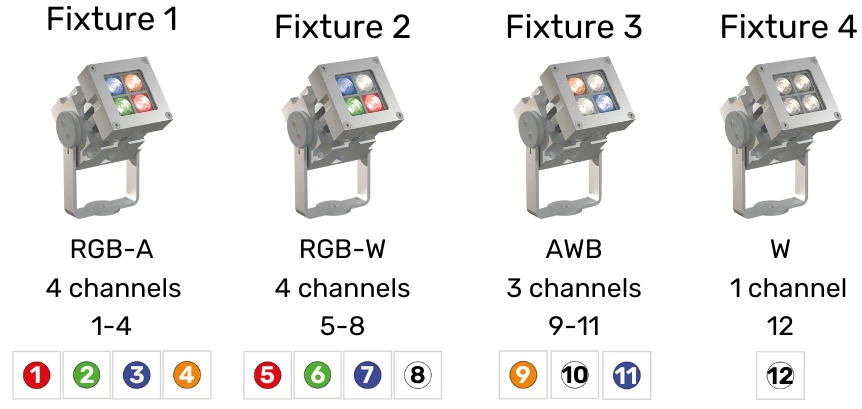
DMX 灯光的不同类型
DMX 灯光实际上是带有 DMX 控制接口的灯具。它们可以通过控制台或软件接收 DMX 信号,从而调节亮度、颜色和其他效果。常见的 DMX 灯具主要分为以下几类:
- 摇头灯
- LED PAR 罐
- LED 条形/条形灯
- 洗墙灯
- 频闪灯
- 追光灯
- 像素/矩阵灯
- 效果灯
| 类型 | 特点 | 应用 |
|---|---|---|
| 移动头 | 方位/俯仰、变焦、图案灯 | 音乐会、剧院、俱乐部 |
| LED PAR | RGB/RGBW, 紧凑型 | 舞台清洗、背景 |
| LED 条形灯 | 线性,像素控制 | 舞台效果、洗墙 |
| 壁挂式洗衣机 | 光束宽广,色彩均匀 | 建筑、舞台背景 |
| 频闪 | 快速闪光、调光 | 俱乐部、音乐会 |
| 关注热点 | 手动跟踪,强光束 | 剧院、活动 |
| 像素/矩阵 | 单个像素控制 | 视觉效果、LED 屏幕 |
| 效果灯 | 激光、烟雾、火焰 | 舞台表演、俱乐部 |
DMX 照明故障排除和解决方案
大多数 DMX 灯光故障都与布线、地址码和终端电阻有关。常见故障如下:
- 照明未受控制:地址码设置错误/未收到信号
解决方案:检查灯具的 DMX 地址是否与控制器的设置相符;确认 DMX 电缆连接正确。 - 有些灯没有信号:信号线松动/连接器接触不良。
解决方案:重新接好 DMX 连接器,确保插头插牢;尝试使用不同的 DMX 电缆进行测试。 - 灯具随机闪烁:终端未添加终端电阻/使用了劣质 DMX 电缆。
解决方案:在最后一个灯具的 DMX 输出端口添加一个 120Ω 终端电阻;使用专业 DMX 电缆。 - 传输距离过长:超过 300 米信号变弱。
解决方案:安装 DMX 信号放大器;尽量减少单段距离。
DMX 照明控制的未来趋势
LED 已成为主流光源:
- 能效高,使用寿命长:适用于需要精确控制的 DMX 系统。
- 色彩可控性强:LED 可调光,并可使用 RGB 或 RGBW 混色,创造出丰富的色彩变化。
- 模块化:LED 可以做成小模块,从而更容易通过 DMX 控制来创造复杂的照明效果。
更智能的 DMX 控制:
- Art-Net 和 sACN 网络协议:DMX 允许更多的灯具通过网络传输信号,实现远程控制。
- 无线 DMX:无线 DMX 降低了布线的复杂性,提高了灵活性。
- 智能控制:未来,照明效果将通过应用程序、触摸屏或人工智能算法来控制。
更多应用场景
- 表演和舞台照明:LED 舞台灯、par 灯、像素灯等可通过 DMX 精确控制。
- 建筑和景观照明:大型 LED 洗墙灯、线性灯和像素灯通常通过 DMX 控制。
- 商业和零售空间:LED 调光和变色与 DMX 控制相结合。
结论:什么是 DMX
DMX 是一种数字通信协议,通过控制信号调节灯具的亮度、颜色和角度,实现同步灯光变化,使舞台表演的灯光效果更加精彩。
人们还会问
什么是 dmx 协议?
DMX 协议是 DMX 控制器用来控制灯具的数字通信标准。控制器发送信号,灯具接收并执行这些信号。
例如,他们可以控制灯光的亮度、颜色、位置和特殊效果。
DMX 如何控制照明?
- DMX 控制器发送数字信号。
- 信号通过 DMX 电缆(RS-485)或无线 DMX 传输。
- 灯具接收自己的信号。
- 灯根据信号执行相应的控制操作。
DMX 可以无线控制灯光吗?
DMX 是一种无线照明控制系统,俗称无线 DMX。信号通过无线电波发送,安装更加灵活,也更易于维护和扩展。

